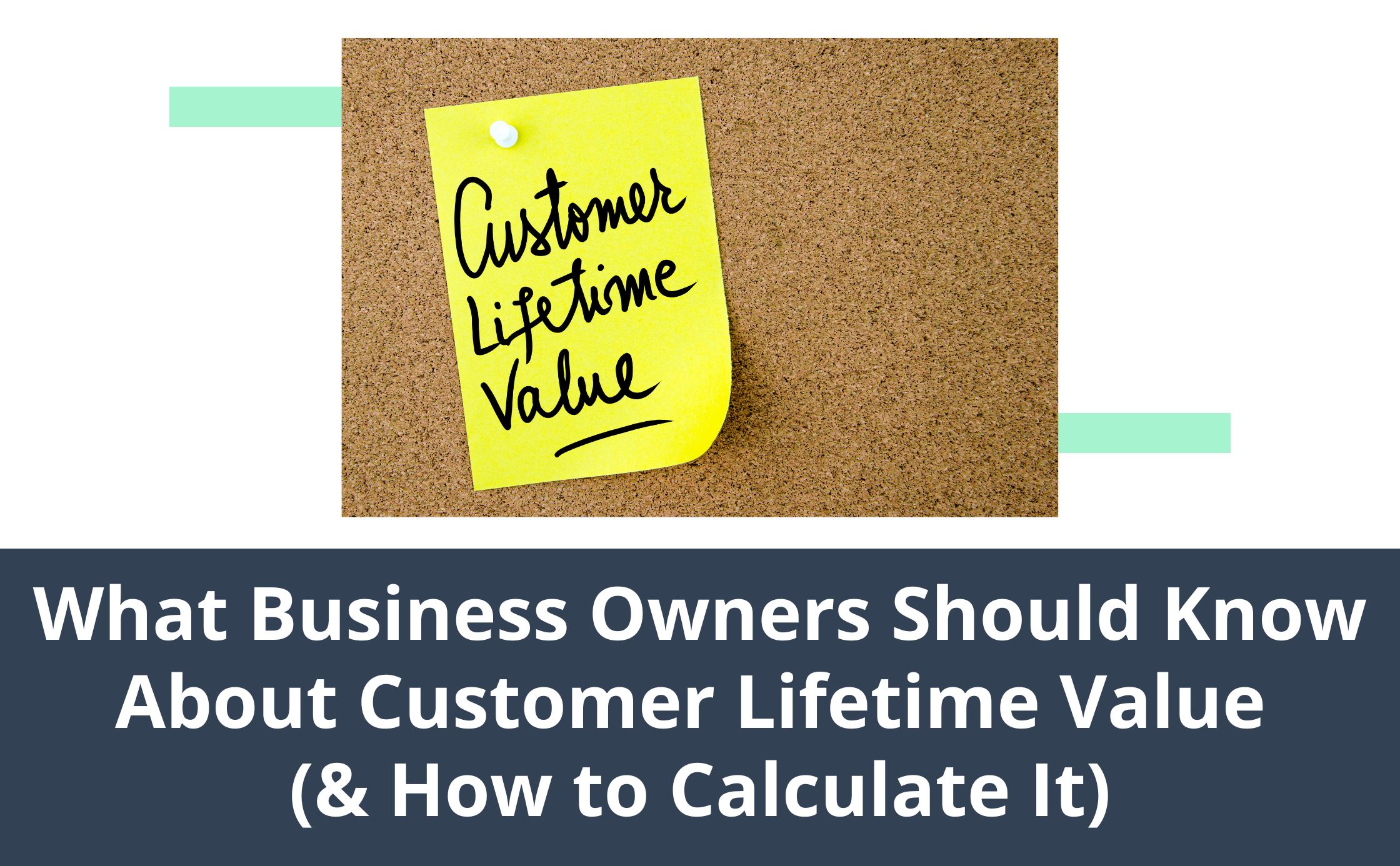Are you struggling to retain high-value customers? Are your customer acquisition initiatives not as profitable as you once assumed? It’s time to take a closer look at your customer lifetime value (CLV).
Small business owners who want to grow and scale their business must pay attention to customer lifetime value (CLV). This is a popular KPI used to better understand revenue trends and business profitability. Tracking your CLV regularly is the best way to ensure your customer retention efforts and marketing campaigns are working effectively.
Here’s everything you need to know about customer lifetime value:
What is Customer Lifetime Value?
Customer lifetime value is the total amount of revenue a business can expect from a specific customer. This KPI is used to better understand profitability and to predict future revenue. It can also be used to improve the long-term value of customer relationships.
If your CLV is high, you likely have loyal customers who love and appreciate your services. If you’re struggling to maintain a profitable CLV, it might be time to revisit your retention efforts to find ways to reduce churn and boost customer loyalty.
A higher CLV is typically an indicator of happy customers. If your customers are satisfied with your customer service, products, and offerings, they are more likely to keep shopping with your small business. When a customer is unsatisfied with your services, they are more likely to explore other products and services from your competitors.
How to Calculate Customer Lifetime Value
To calculate, you’ll want to use this customer lifetime value formula:
Customer lifetime Value = (Average Purchase Value x Average Purchase Frequency) x Average Customer Lifespan
Customer lifetime value is determined by purchase value, frequency, and lifespan. For example, let’s say you own a salon and you have a customer who spends $100 per year on your services. The customer continues to visit your salon for 5 years. This means the average CLV would be $500. CLV is a common KPI that small businesses should track regularly. If you notice your CLV is decreasing, it could be a sign of a higher churn rate or that your customers are unsatisfied.
Why is CLV Important for Small Businesses?
CLV provides key insight into what is and isn’t working with your retention efforts. It will help you better understand the effectiveness of your marketing efforts, customer service tactics, and engagement campaigns. Tracking your CLV can also help:
Improve Customer Retention
Did you know it’s more affordable to maintain a current customer who is familiar with your products and services than to acquire a new one? Improving your CLV can enhance your retention efforts, helping you turn a one-time customer into a loyal, returning customer.
Enhance Your Marketing Strategy
If you’re struggling to maintain your current clients, you can use your marketing to reduce turnover and improve retention. This will help boost customer loyalty and profitability. For example, if you own an HVAC company, you can use email marketing to engage with your current customers. Sending special loyalty incentives or engaging content that provides value will ensure your brand is always top of mind.
Better Business Planning
Understanding your customer lifetime value will help you make better business decisions. You can make informed choices about pricing, products, and marketing initiatives. Your CLV can also inform your financial forecasting strategy, providing an accurate estimate of future revenue, so you can plan more effectively.
How to Increase Customer Lifetime Value
Increasing your customer lifetime value will help you maintain profitability and maximize your ROI. Some effective ways to do this include:
Improve Customer Service
Customers should always be your number one priority. You want to ensure their needs are always being met. You’ll want to ensure you respond to their emails, calls, and live chat questions quickly.
Personalized Recommendations
Customers never want to feel like just another customer. They want to feel valued and understood. The best way to ensure every customer’s needs are met is to incorporate personalization. With personalization, you can ensure that your customers are receiving personalized recommendations that align with their specific needs. This will help improve customer loyalty and satisfaction.
Develop Loyalty Programs
Loyalty programs reward returning customers with discounts and incentives. It’s the most effective way to keep your loyal customers engaged and keep them coming back for more. You can create a point system, where every purchase earns you points. You can also send special offers on birthdays and anniversaries to keep loyal customers engaged with your offerings.
Stay in Touch
After you land a deal or complete a service, the marketing doesn’t stop there. Use email and SMS marketing to engage with your customers, ensuring your products and services are always top of mind.
Business management platforms like Townsquare Interactive’s have built-in email marketing templates and automation tools to stay in touch with current customers. With the right content, you can keep customers engaged and satisfied with your offerings.
Improve Customer Lifetime Value With a CRM
If you want to improve your CLV, you’ll need to get serious about your customer engagement initiatives. Prioritizing customer loyalty through customer retention efforts and email engagement is the most effective way to slowly but surely increase your CLV.
Townsquare Interactive’s innovative business management platform has all the tools you need to develop loyalty programs and personalized email marketing campaigns. Our platform also has features such as an integrated inbox and appointment scheduling tools you can use to improve your approach to customer service.

